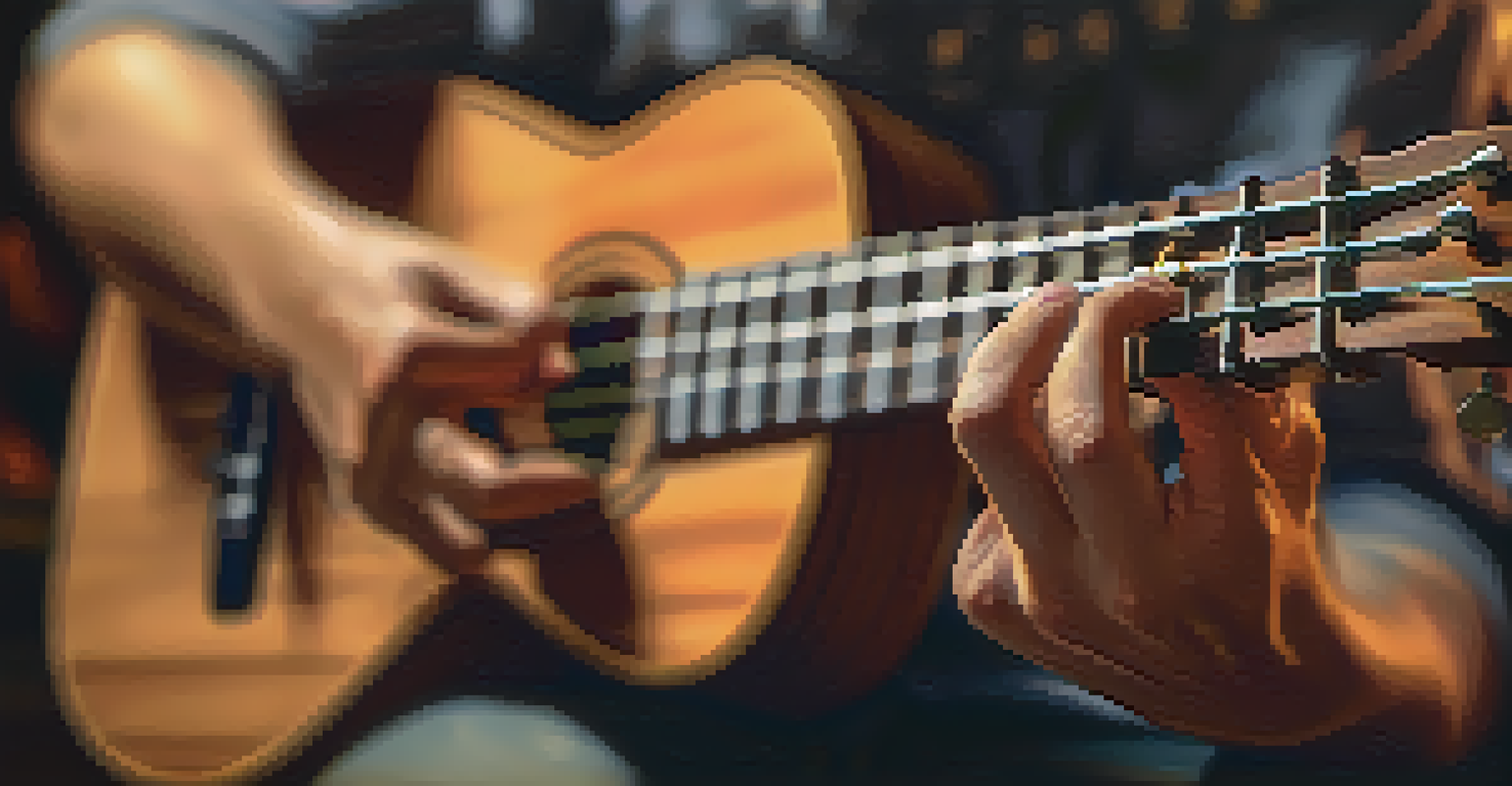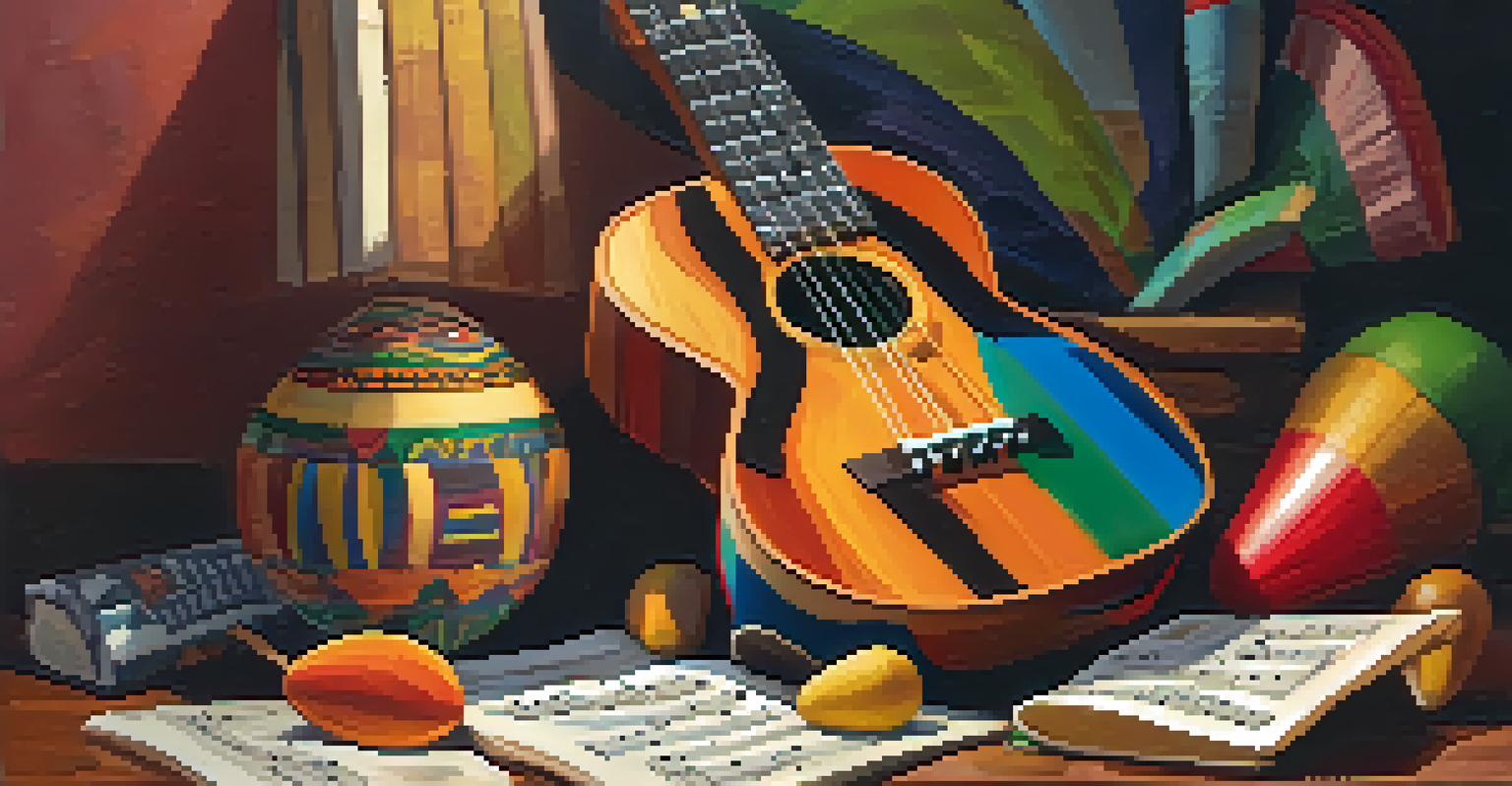Innovative Ukulele Techniques: The Future of Playing Styles

The Evolution of Ukulele Playing Techniques
The ukulele has come a long way since its humble beginnings in Hawaii. Its evolution has been marked by various playing techniques that enhance its sound and versatility. From traditional fingerpicking to contemporary strumming, each method brings a unique flavor to the instrument.
Music is the universal language of mankind.
As musicians experiment with styles from different genres, we see a fusion of techniques that expand the ukulele's potential. For example, combining flamenco rhythms with jazz chords creates an intriguing soundscape. This evolution not only broadens the music genre but also attracts a diverse audience.
Understanding the historical context of these techniques allows players to appreciate the instrument more deeply. By learning from the past, ukulele players can innovate and shape the future of their playing styles.
The Rise of Percussive Playing Styles
Percussive playing has become a prominent technique among ukulele players, adding a rhythmic dimension to performances. This style involves tapping on the body of the ukulele while strumming, creating a drum-like effect that enhances the overall sound. It’s a technique often seen in contemporary folk and pop music.

Artists like Taimane Gardner exemplify this technique, using it to create dynamic and engaging performances. By incorporating percussive elements, players can make their music more interactive, drawing the audience into the experience. It transforms the ukulele into a multi-dimensional instrument.
Evolution of Ukulele Techniques
The ukulele has transformed through various playing styles, allowing for greater musical expression and innovation.
As this style gains popularity, more ukulele tutorials and workshops are emerging, making it accessible to players of all levels. This democratization of percussive techniques encourages creativity and experimentation, paving the way for future innovations.
Incorporating Technology in Ukulele Playing
Technology is revolutionizing how musicians interact with their instruments, and the ukulele is no exception. With the advent of loop pedals and effects processors, players can layer sounds and create complex compositions. This capability allows for a fuller, richer musical experience.
The best way to predict the future is to create it.
For instance, using a loop pedal, a player can record a simple chord progression and then add melodies and harmonies in real-time. This technique not only enhances solo performances but also opens up new avenues for collaboration, even with remote musicians. It’s a fascinating way to push the boundaries of traditional playing.
As technology continues to evolve, the potential for innovative ukulele techniques will expand. Musicians who embrace these tools can explore new creative landscapes, making their playing styles more engaging and unique.
Exploring Alternative Tunings for Unique Sounds
Alternative tunings can dramatically change the character of the ukulele, offering fresh sonic possibilities. For example, tuning the ukulele to a D tuning can give a whole new voice to familiar chords, inviting players to explore different melodies and harmonies. This technique encourages experimentation and creativity.
Many artists are now using alternative tunings to craft unique compositions that stand out in a crowded musical landscape. By deviating from standard tuning, musicians can discover unexpected chord progressions and sounds, enriching their musical repertoire. It’s like opening a door to a room full of undiscovered treasures.
Impact of Technology on Playing
Incorporating technology like loop pedals has allowed musicians to create complex compositions and enhance their performances.
The beauty of alternative tunings is that they can be both simple and complex, making them accessible for beginners while still challenging experienced players. As more ukulele players explore these tunings, we can anticipate a wave of innovation in playing styles and compositions.
The Influence of Other Genres on Ukulele Techniques
The ukulele is not confined to any one genre; it thrives on cross-pollination from various musical styles. From jazz and blues to reggae and rock, each genre contributes techniques that enrich ukulele playing. This blending of styles fosters an exciting environment for musicians to innovate.
For example, incorporating jazz chords and licks can elevate a standard ukulele performance, adding sophistication and flair. Similarly, reggae strumming patterns can bring a laid-back vibe to any song. These influences help players to break away from traditional boundaries and explore new territories.
As musicians continue to draw inspiration from different genres, the future of ukulele playing will likely be defined by its versatility and adaptability. This genre-blending approach not only keeps the music fresh but also attracts a wider audience.
The Importance of Community in Innovative Techniques
The ukulele community plays a vital role in fostering innovation and sharing new techniques. Online forums, social media groups, and local meetups provide platforms for musicians to exchange ideas and collaborate. This sense of community encourages players to experiment and push their creative boundaries.
As players share their experiences and techniques, they inspire one another to try new things. For example, a player might discover a unique strumming pattern from a YouTube tutorial that sparks their creativity. This collaborative spirit is essential for the growth of innovative playing styles.
Global Influences Enhance Creativity
Embracing diverse musical influences from around the world enriches ukulele playing and fosters innovative techniques.
The more musicians engage with one another, the more diverse and dynamic the ukulele sound becomes. This communal approach not only enhances individual skills but also enriches the overall musical landscape, paving the way for future innovations.
Embracing Global Influences in Ukulele Playing
As the world becomes more interconnected, global music influences have started to shape ukulele techniques. Artists are exploring sounds from different cultures, integrating global rhythms and melodies into their playing. This cross-cultural exchange enriches the ukulele's sound and appeal.
For instance, incorporating Hawaiian slack key guitar techniques into ukulele playing can create a beautiful blend of traditional and modern sounds. Similarly, Latin rhythms can introduce exciting new patterns and grooves that make songs come alive. These influences contribute to a richer musical experience for both players and listeners.

By embracing these global influences, ukulele players can expand their musical horizons and create innovative styles that reflect a diverse world. This openness to different cultures not only enhances creativity but also fosters a greater appreciation for the universal language of music.